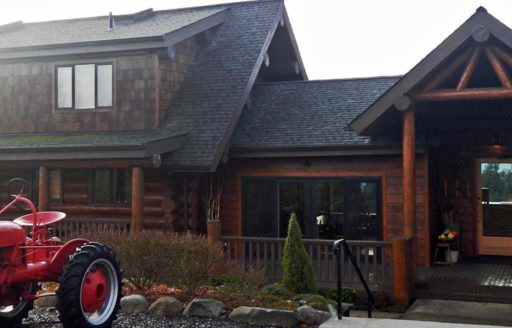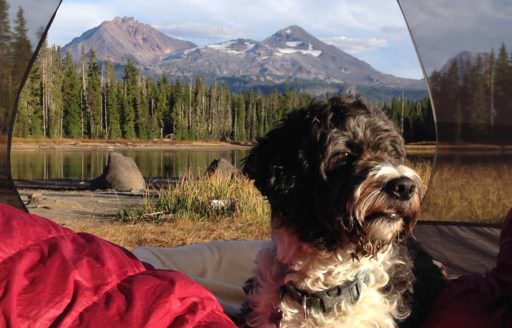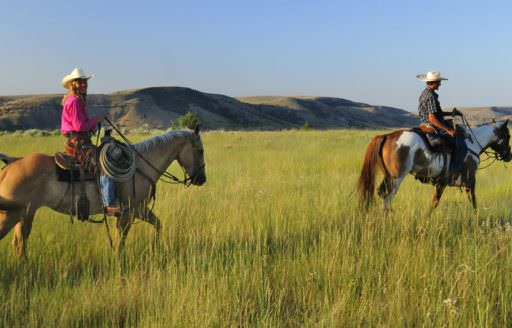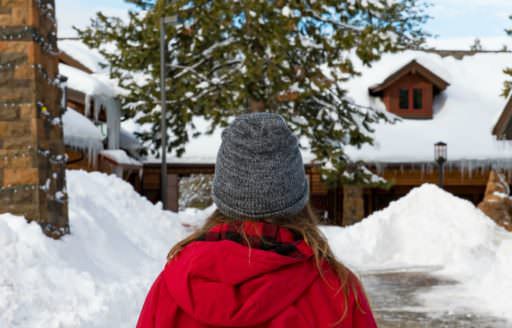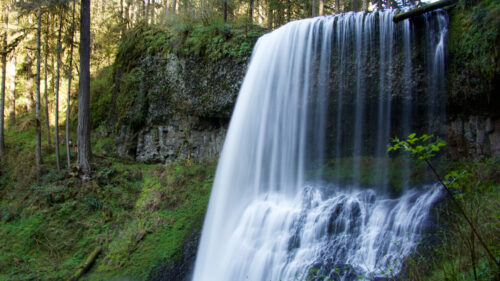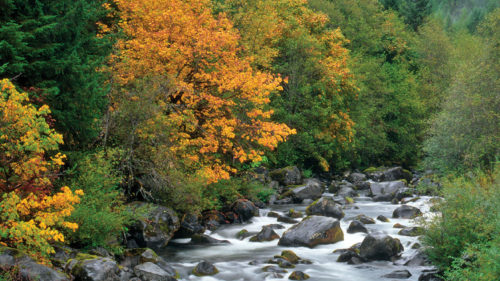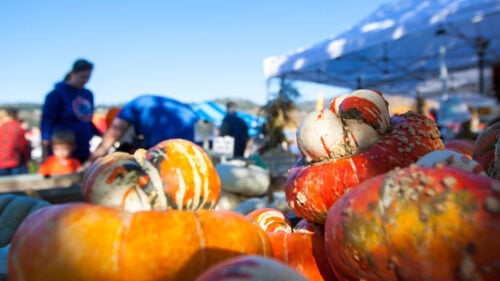Just over 30 miles southeast of Portland, Camp Colton in the agricultural town of Colton near Oregon City appears at first glance to be simply a peaceful forest getaway. Dating back to the 1920s and for many decades a camp for kids, it now serves a wider vision as a place for all to comfortably camp alongside soothing streams and escape the bustle of city life. A meandering walk through the 85-acre property through the woods takes visitors over babbling creeks and through a forest dense with Oregon bigleaf maples, the air perfumed with the clean scent of damp moss and rich soil.
It’s those maples that really distinguish the historic camp — which now specializes in weddings, retreats and retro-chic lodging in a range of cabins and yurts — from others. They can grow up to 100 feet tall and have trunks as large as a diameter of 4 feet. Their leaves, which turn brilliant shades of gold each fall, can be as large as dinner plates.
On the walk, you see narrow tubing fixed to the trees and headed down the hill to what’s known as the Sugar Shack. Here the Oregon Maple Project draws sap from the trees on the property in the fall and winter, processing it into maple syrup in early spring. If you didn’t know that Oregon maples could produce syrup, or even how to identify one of Oregon’s most iconic trees, here is a guide to how and where to see them.
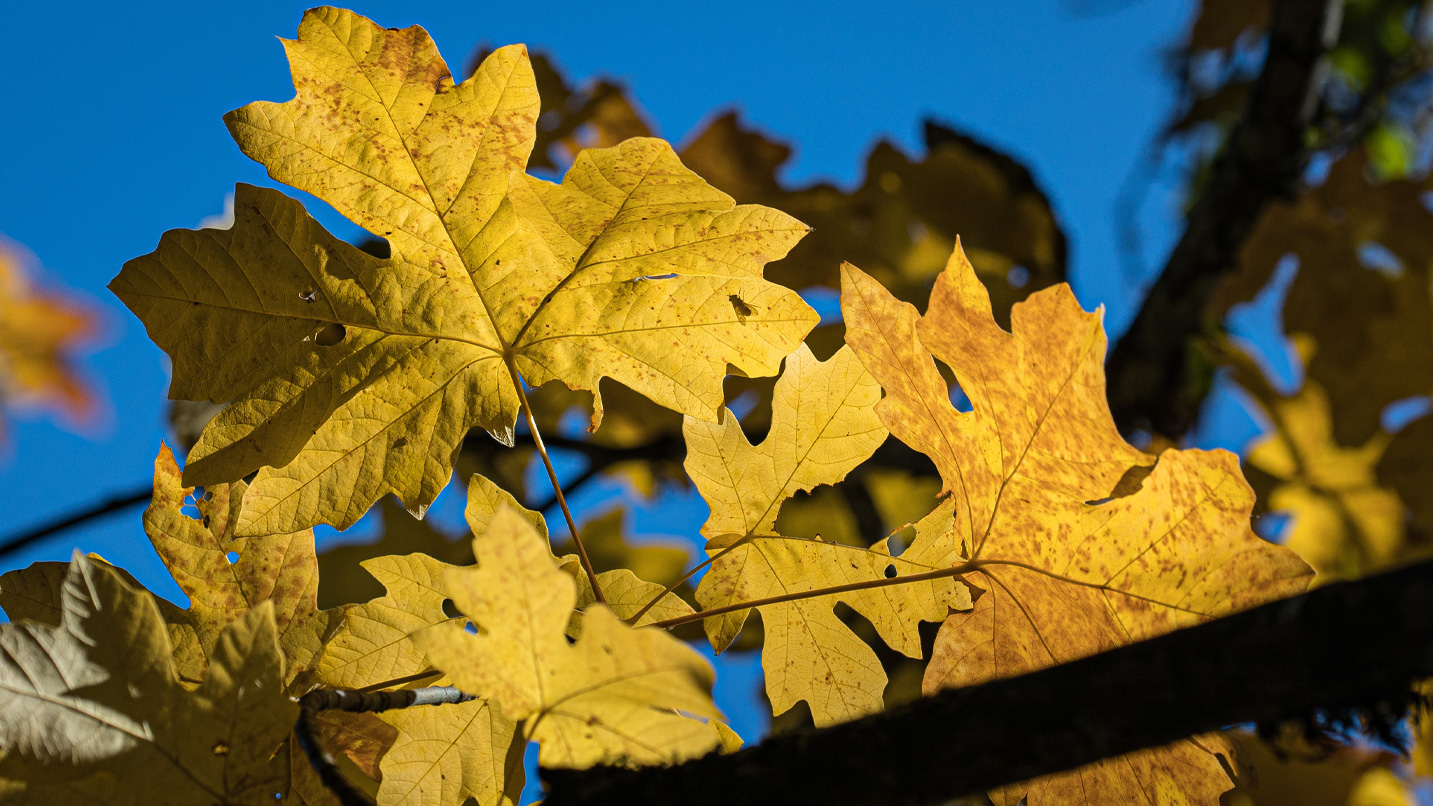
The Cultural and Ecological Significance of the Bigleaf Maple
The tallest maple tree in North America, the Oregon bigleaf maple tree is the only maple tree native to the Pacific Northwest. When you encounter a bigleaf maple, there’s no chance of confusing it with any other tree. With distinct leaves that look like their smaller maple cousins, bigleaf maples can reach 12 inches across. Their majestic size makes for a great selfie prop on a forest walk. Since long before photography, though, Pacific Northwest Indigenous people have cherished bigleaf maples as valuable sources of both wood and medicine.
Bigleaf maples also play a crucial ecological role, as hosts for tiny plants and critters that rely on them, like lichens and insects. These insects, in turn, attract small mammals and birds, fostering interconnected relationships that enhance the biodiversity of the forest. In summer the canopy provides shelter, and in spring the trees are filled with clusters of blossoms that feed pollinators. The fallen leaves of winter also enrich the soil with organic matter and promote the growth of understory plants, contributing to the overall health of the forest ecosystem.
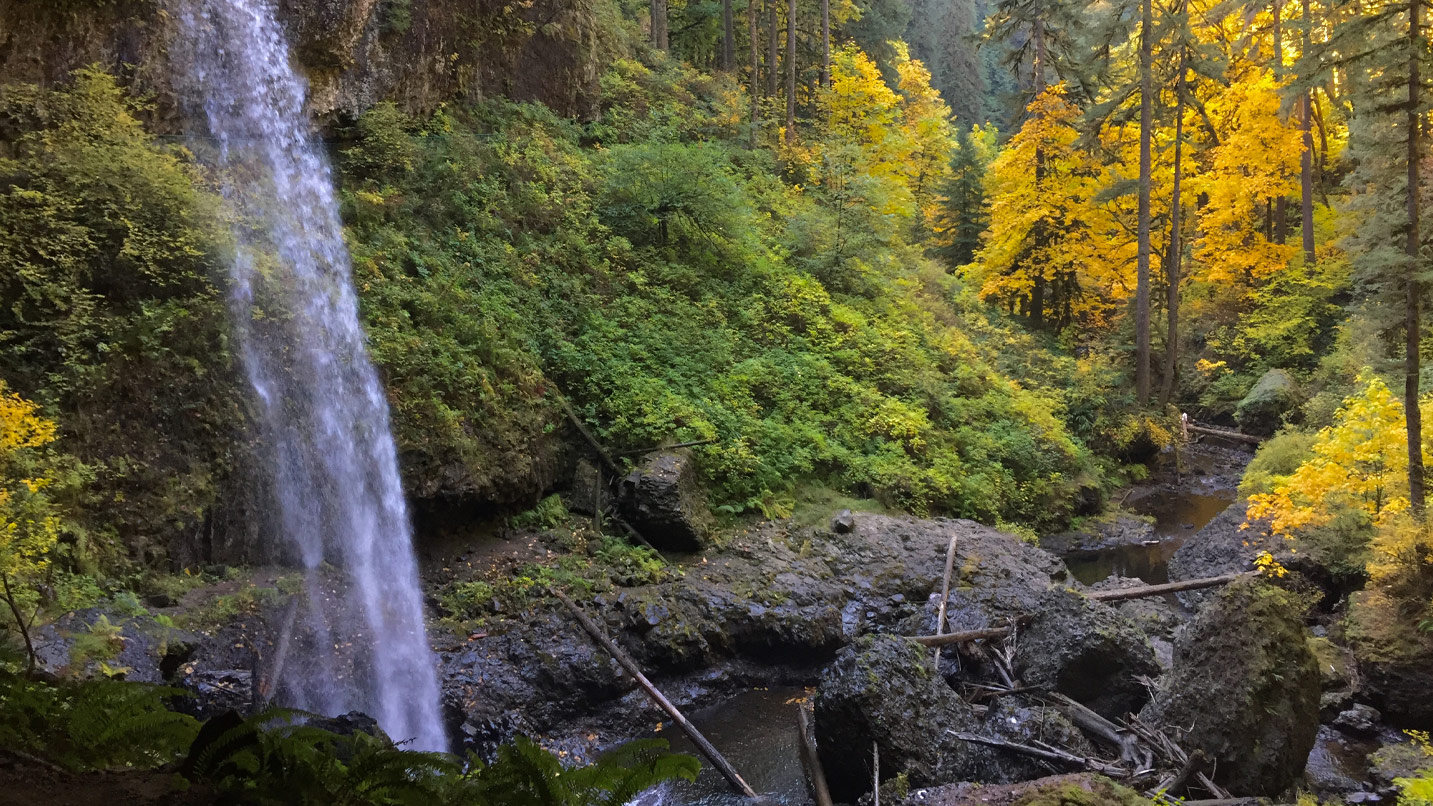
Marvelous Maple Day Hikes In and Near Portland
You’ll likely see maples in parks, campgrounds and along the road just about anywhere in Western Oregon, but the Portland area has some particularly nice parks to spot them, especially in the fall when the foliage turns a deep golden yellow. The experience is likely to heighten your senses, making you extra observant of the bird songs in the canopies above, the cool forest air on your skin and the dappled sunlight filtering through the trees.
With its thorough cataloging and clear labeling of its collection of trees, the Hoyt Arboretum in Forest Park might be the first place that comes to mind to seek out these impressive trees, but it’s not the only spot in the Portland area where you can find them. George Himes Park in Southwest Portland features hilly paths that take you past some of the tallest and most mature bigleaf maple trees in the city. An array of self-seeded saplings can be found growing around the base of the mature maple trees, a testament to the natural regeneration of the woodland.
Powell Butte, one of Portland’s many urban green spaces, spans 611 acres on the site of an extinct cinder-cone volcano in Southeast Portland. Visitors looking to peep some maples should start by exploring the Forest Edge Trail. The park is also home to an expansive open meadow, groves of wild hawthorn trees, forested slopes of Western red cedar and wetlands near Johnson Creek.
At Kelley Point Park, you’ll find 90 acres of forest to explore in this riverfront nature park at the northernmost tip of Portland. This park is unique in that the forest meets the convergence of the Willamette and Columbia river shores, and bigleaf maples can be found not only on the countless trails snaking through the park but also along the edge of the beach.
Stepping into the Columbia Children’s Arboretum, located in an unexpected pocket of industrial Northeast Portland, feels like stepping into another world. The thrum of traffic falls away and is replaced by the lively chirps of the birds that call this 27-acre parcel of land home, alongside a handful of young maple trees. A good portion of this park is paved, making it a great choice for strollers and wheelchairs.
If you’d like to combine waterfalls and maple viewing, head to Silver Falls State Park, southeast of Salem. The park may be best known for its trail of 10 breathtaking cascades, but you’ll want to investigate an impressive trail of bigleaf maples as well. For the best Oregon maple viewing, explore the area around the South Falls Viewpoint as well as the Maple Ridge Trail.
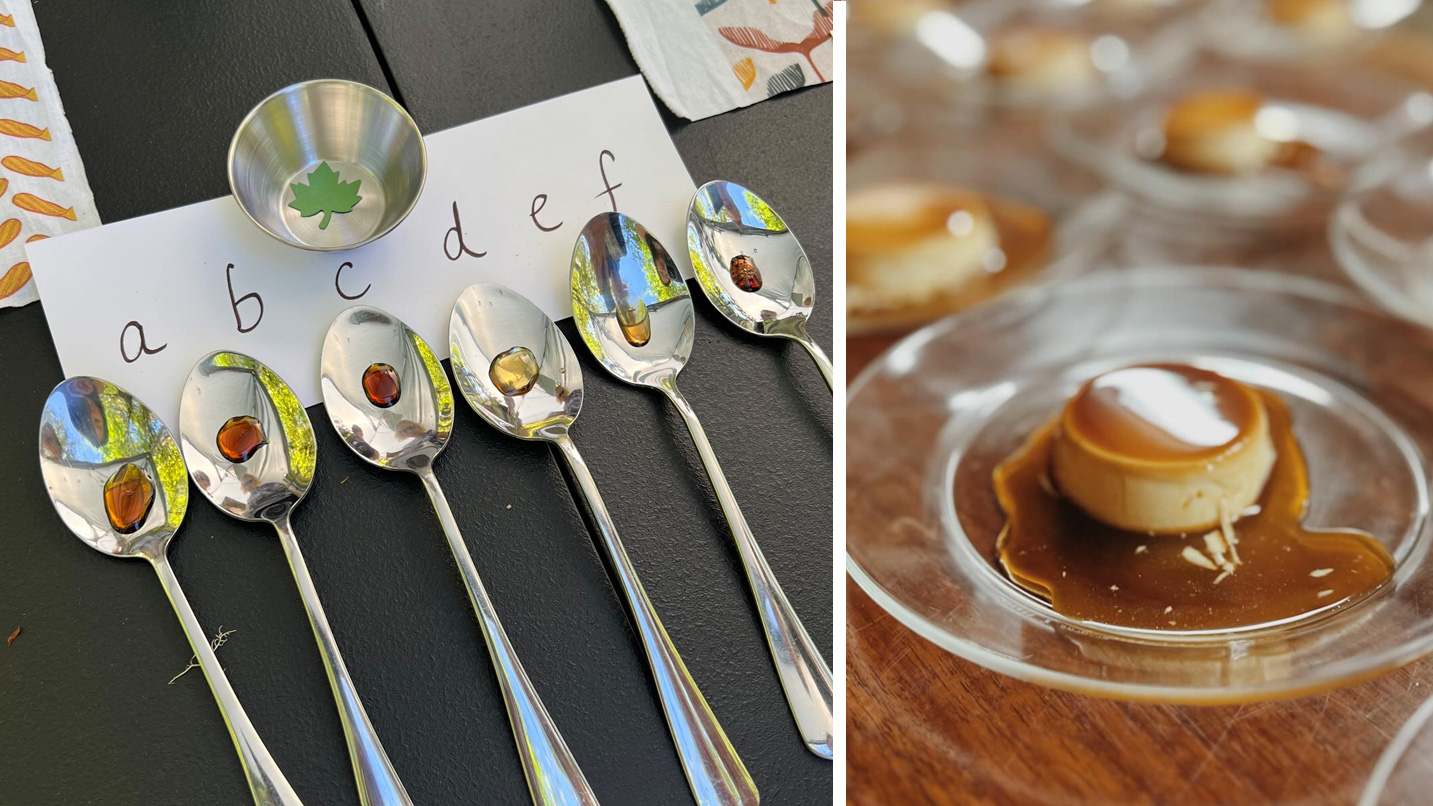
Taste Oregon Maple Syrup and Learn About How to Make It
Perhaps the most unusual experience you can have with an Oregon maple is to drink from it. That’s where Camp Colton and the Oregon Maple Project come in. From late November through April, a team of staff and volunteers taps maples — slowly pulling watery sap from the tree trunks via the gravity-fed system of tubes that lead downhill to the Sugar Shack — and boils down the liquid into syrup in early spring.
Since the Oregon Maple Project’s mission as a nonprofit collaboration is educational, it offers programs for adults and children of diverse backgrounds on the art of tapping trees and sugaring. A host of events and workshops throughout the sugaring season highlight how this traditional practice connects us to nature and incorporates science, math, mythology, poetry, history and community.

Wildcraft Studio School, which focuses on crafts and nature-based workshops for adults, offers a bigleaf maple sugaring workshop in December, led by Oregon Maple Project founder Eliza Nelson. In this class, participants assist with sap collection and other tasks on the maple farm, and gain hands-on experience tapping trees. You can also sign up to volunteer with the Oregon Maple Project and assist with sugaring tasks such as tapping trees, trail maintenance and boiling sap into syrup from October through March.
Those wanting to experience the maple sugar process in an immersive way can attend Camp Colton’s annual Big Leaf Maple dinner in the spring — held in collaboration with the Oregon Maple Project — and stay overnight at the camp. The evening starts with a maple syrup tasting at the Sugar Shack and a guided maple walk through the forest. Visitors see a demonstration of how the gravity-fed tapping system works quite differently from the traditional bucket-style maple tapping on the East Coast. The experience culminates with a multicourse dinner featuring maple syrup harvested on-site.



